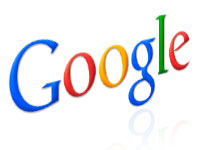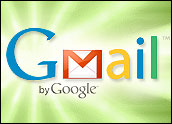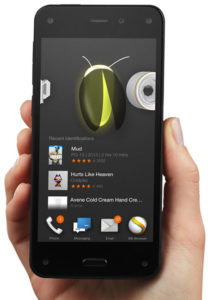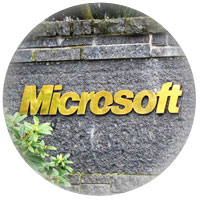
Flanked by landmark partners including Coca-Cola and Microsoft, Facebook on Tuesday unveiled a new advertising system that allows marketers to tap into the power of personal connections on the wildly popular social networking site.
Facebook Ads provides a way for businesses to connect with users and target advertising to the particular audiences they want by making use of the trusted referrals of the community’s networks of friends. Through the system, businesses build pages on Facebook to connect with their audiences. Facebook Social Ads facilitate the spread of brand messages virally, and a new interface gathers and gives marketers insights into users’ activity on the site.
“Facebook Ads represent a completely new way of advertising online,” founder and CEO Mark Zuckerberg told an audience of marketing and advertising executives in New York. “For the last hundred years, media [have] been pushed out to people, but now marketers are going to be a part of the conversation. And they’re going to do this by using the social graph in the same way our users do.”
Facebook claims 52 million active users.
100,000 Business Pages
More than 60 major consumer and Internet brand partners were highlighted at the launch of Facebook Ads, including Blockbuster, CBS, Chase, Sony Pictures, Verizon, CondNet, Crest Whitestrips, Dove Cream Oils, Herbal Essences, The New York Times and Saturn.
Indeed, more than 100,000 new Facebook pages launched Tuesday, covering the world’s largest brands, local businesses and organizations, Facebook said.
“The core of every user’s experience on Facebook is their page and that’s where businesses are going to start as well,” explained Zuckerberg. “The first thing businesses can do is design a page to craft the exact experience they want people to see.”
The Social Graph
Like individual users, businesses can start with a blank canvas and add all the information and content they want, including photos, videos, music and Facebook Platform applications for purchasing, booking reservations or providing reviews, for example.
Users can become fans of a business and share information about it with their friends. They can also interact directly with it through its Facebook page by adding reviews, uploading photos or other ways the business has enabled.
When users engage with a business’ Facebook page, such as by purchasing a product or reviewing a restaurant, that action will spread information about the business through the social graph, which is essentially the network of connections through which people communicate and share information on the site.
No Personally Identifiable Information
Social Ads, then, combine information about social actions from users with an advertiser’s message. They can appear either within users’ News Feeds as sponsored content or in the ad space along the left side of the site.
No personally identifiable information is shared in creating a Social Ad, and users will only see Social Ads to the extent that their friends are sharing information with them, Facebook said.
For the marketer, meanwhile, Facebook provides an assortment of metrics about their presence and promotion on Facebook, including activity data, fan demographics, ad performance and trends.
‘Sprite Sips’
Coca-Cola will feature its Sprite brand on a new Facebook page and invite users to add an application to their account called “Sprite Sips,” which will let them create, configure and interact with an animated Sprite Sips character. U.S. consumers will be able to enhance the experience further by entering a PIN code found under the cap of 20 oz. bottles of Sprite, unlocking a variety of special features and accessories.
The company plans to run a series of Social Ads to spread the application across its user base.
“We have consistently explored new ways to reach our target audience with a compelling brand experience,” said Carol Kruse, vice president of global interactive marketing for Coca-Cola. “With Facebook Ads, our brands can become a part of the way users communicate and interact on Facebook.”
Facebook Beacon
One additional component Facebook revealed on Tuesday was Facebook Beacon, which is designed to allow users to share information from other Web sites for distribution to their friends on Facebook.
When users who are logged into Facebook visit a participating site, they receive a prompt asking whether to they want to share information about what they did — posting an item for sale on eBay, for example — with their friends on Facebook. If they do, those friends can now view those actions through News Feed or Mini-Feed stories. Forty-four sites have signed up so far, including eBay, which plans to include the feature early next year.
“Beacon offers an interesting new way for us to deliver on our goal of bringing more bidders and buyers to our sellers’ listings,” said Gary Briggs, senior vice president and chief marketing officer for eBay North America. “In a marketplace where trust and reputation are crucial to success, giving sellers the ability to easily alert their network of friends — the people who already know and trust them — to an item for sale has the potential to be a powerful tool.”
The Unknown Factor
Facebook clearly has far-reaching plans for the new advertising system, but its success will depend on users’ reactions, a number of analysts noted.
“My biggest take-away is that they are thinking really, really big in terms of what online advertising can become when combined with social networking,” Debra Aho Williamson, a senior analyst with eMarketer, told the E-Commerce Times.
“It’s an extremely ambitious program, and there are a lot of moving parts and a lot of potential for negative feedback,” Williamson noted.
While Facebook users will be able to decide what information gets pushed out to their friends, for example, it’s not clear that those friends will have any ability to decide what gets pushed to them, she explained.
Devil in the Details
Indeed, “it seems to me the devil is in the implementation details,” Andrew Frank, a research vice president with Gartner Group, told the E-Commerce Times.
“Everyone has a threshold for when something turns from being empowering to being annoying,” Frank explained. “I don’t think anyone knows how that line can be drawn on a mass-consumer basis, and that’s what we’re about to find out.”
MySpace’s newly launched HyperTargeting service is a “much more conventional approach to targeting ads,” Frank added.
“I think the danger for Facebook is that the site will get ‘spammy’,” Greg Sterling, founder of Sterling Market Intelligence, told the E-Commerce Times.
“On a conceptual level, it’s very clever and a very creative use of their system,” Sterling said. “But the practical effect might be to diminish the quality of the user experience. There’s already a lot of noise on the site, and this has the potential to exacerbate that and to lead to a backlash from users.”
‘Anyone’s Guess’
Relevance assessments could also need some tweaking, Williamson said.
“If one friend reviews a restaurant highly, that sort of information can be very powerful,” she noted. “But in other situations, such as with the big major brands, it may be less so. If I become a fan of Sprite, for example, what do my friends care?”
Moving forward, only time will tell what kind of reception the new system receives.
“There’s a lot of new and pretty experimental stuff being proposed here, and I think the outcome is pretty uncertain at this point,” Frank concluded. “This is going to teach us a lot about the future of advertising; whether it accrues to the benefit of Facebook or not is anyone’s guess.”












































Social Media
See all Social Media